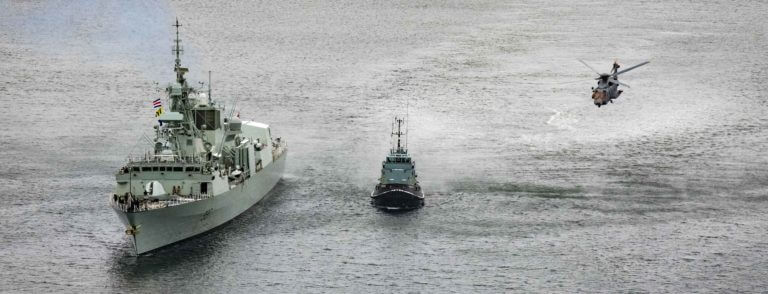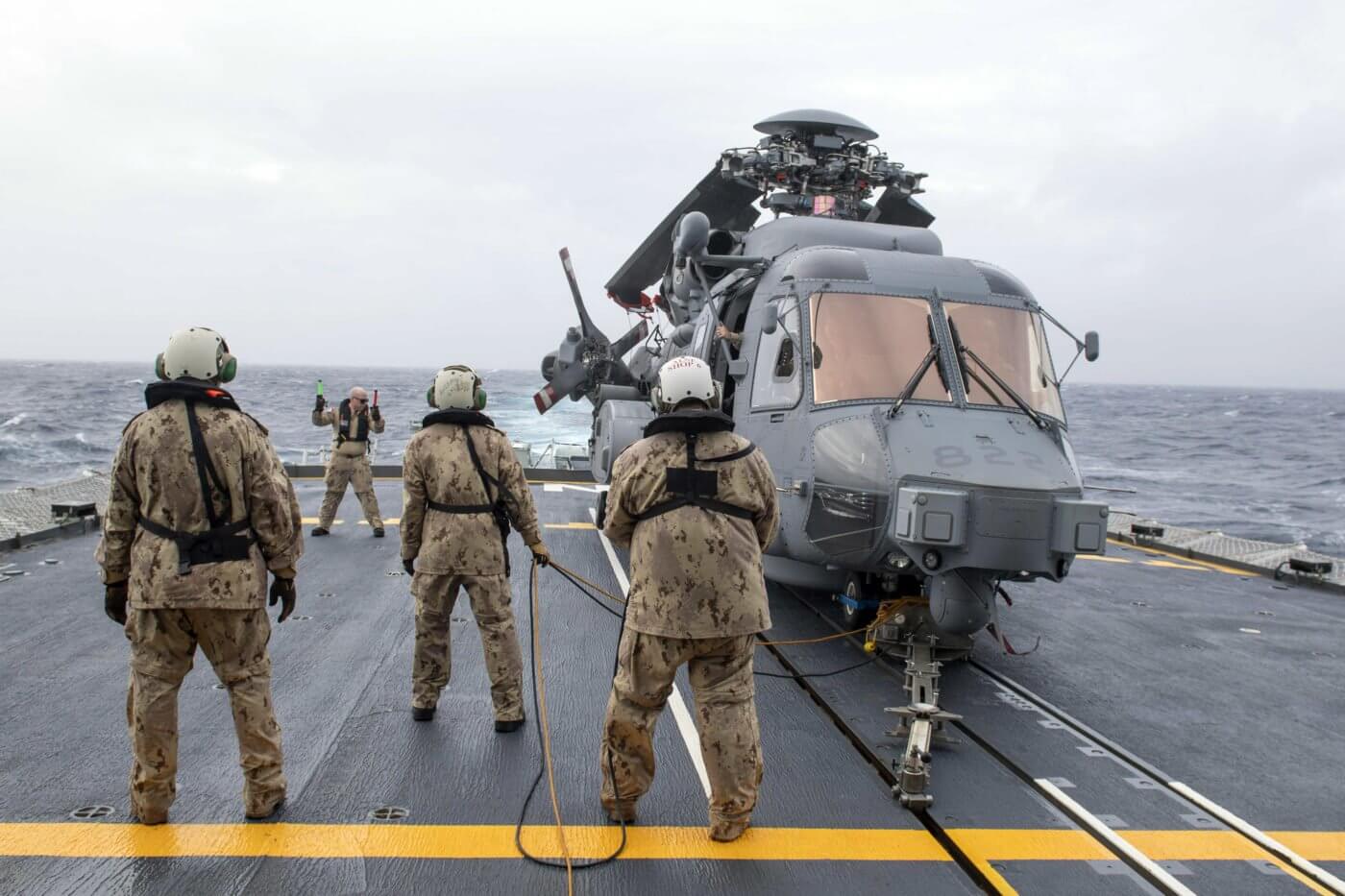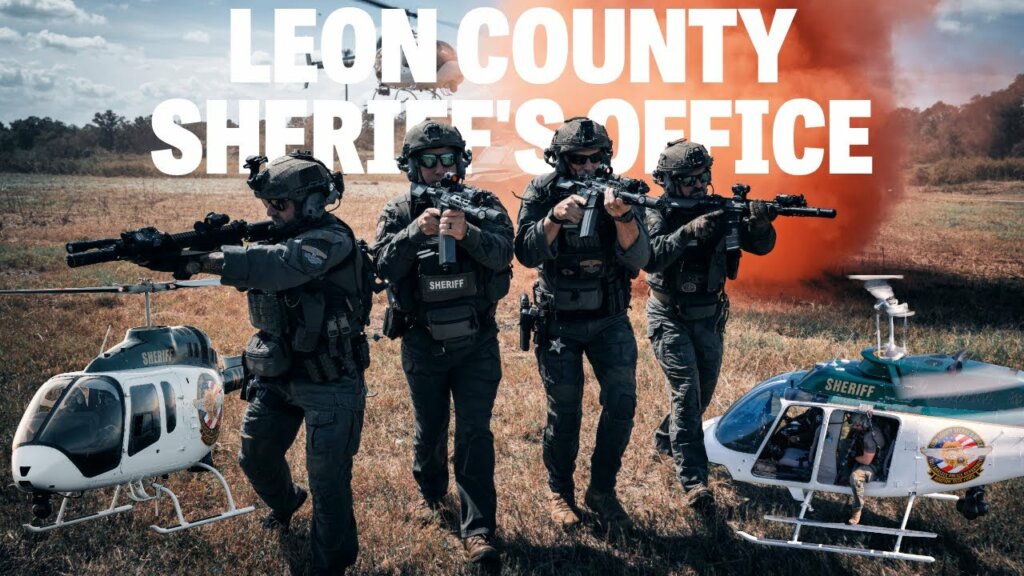An operation with a United States Navy submersible and salvage system is now underway to recover the remains of Canadian Armed Forces (CAF) members presumed killed during the crash of a CH-148 Cyclone helicopter into the Ionian Sea on April 29.

The Cyclone, callsign Stalker 22, nosed into the water as it was positioning to approach the rear of HMCS Fredericton following a maritime surveillance training mission as part of Royal Canadian Navy operations with Standing NATO Maritime Group 2 (SNMG2) in the Mediterranean.
The helicopter had flown alongside the frigate and was preparing to conduct deck hoist training prior to landing on the deck when it crashed within sight of the ship.
The data modules for the cockpit voice recorder and flight data recorders, located in the tail of the helicopter, were recovered shortly after the crash and have been returned to Canada for analysis by the National Research Council and the aircraft manufacturer, Sikorsky.
The body of Sub-Lieutenant Abbigail Cowbrough, a marine systems engineering officer from Nova Scotia, was recovered immediately after the crash. Remains of Capt Brenden Ian MacDonald were identified on May 9. Four others, Capt Kevin Hagen, a pilot, Capt Maxime Miron-Morin, an air combat systems officer, Sub-Lt. Matthew Pyke, a naval weapons officer, and MCpl Matthew Cousins, an airborne electronic sensor operator, are still missing and presumed dead.
A seven-person investigation team from the Royal Canadian Air Force (RCAF) Directorate of Flight Safety arrived in Italy on May 2 and is expected to issue a preliminary report “that will outline focus areas for the continuing investigation and will inform our decision regarding the fleet,” MGen Alain Pelletier, commander of 1 Canadian Air Division and the Joint Force Air Component Commander, said in a briefing on May 19.
Following the incident, Pelletier ordered an operational pause of the CH-148 fleet, temporarily ceasing all flying operations while the investigators assess the “potential risks associated with the operation of the aircraft.”
The CAF has pledged to do all it can to find the missing aircrew and naval officer. “We do not leave our fallen behind,” said LGen Rouleau, commander of Canadian Joint Operations Command (CJOC).
After consulting with salvage specialists and allies, the military is drawing on a pre-existing agreement with the United States Navy to deploy a team from the Naval Sea Systems Command’s salvage and diving unit. Using a remotely operated vehicle (ROV) and a flyaway deep ocean salvage system that can operate in depths of 6,000 metres, they hope to locate the wreckage believed to be about 3,000 metres below the surface.
“This is a proven USN capability that has been used dozens of times for search and recovery operations,” said RAdm Craig Baines, the Maritime Component Commander. “The USN offered us this option as both the fastest means of commencing the search while at the same time using the same system to recover what we potentially discover.”
The ROV and salvage system will be integrated into the EDT Hercules, an offshore multipurpose support vessel that will serve as the deep-sea recovery platform. The vessel will also carry US Navy and five Canadian personnel – two flight safety officers, two navy divers, and a medical officer.
Because the Cyclone struck the water close to the ship, the CAF has “excellent positioning data on where the helicopter potentially is located,” said Baines. It’s hoped the ROV will further narrow the search by detecting the helicopter’s underwater locator beacon, which should be active for at least 30 days.
He said the search would begin within 24 hours of the vessel arriving on site, sometime after May 25.
“An operation of this nature is not without challenges and factors like weather and sea state could cause delays,” he added. “Our first priority is to recover our fallen, and our second priority is to recover what we can to assist in the flight safety investigation.”

The decision to attempt to recover the missing crew and aircraft was “made very quickly following the incident,” said Rouleau. And while time is a factor in any underwater recovery, the operation will not be constrained by time or cost.
“We are going to be there until we are satisfied that we have collected everything that we can collect,” he said. “Out of respect for our fallen, we will not do half measures and seek partial information until the proper authorities are satisfied … [W]e need to know what occurred to inform our operations and our capabilities, morale and confidence.”
Both Rouleau and Pelletier cautioned media and Canadians not to speculate about the possible cause of the accident until investigators have completed their work. The CH-148 fleet, a militarized variant of the Sikorsky S-92 utility helicopter, replaced the CH-124 Sea Kings in 2018 after achieving initial operating capability on June 7 of that year. The Cyclone conducted its first operational deployment on board Ville de Quebec in July 2018, flying more than 500 hours and 170 missions while at sea as part of SNMG2.
The manner in which the Cyclone crashed has prompted some to suggest a problem with the flight control system. A failure in 2017 of the triple redundant fly-by-wire software forced the RCAF to ground the fleet for nine months during initial acceptance trials while the issue was addressed by Sikorsky.
Pelletier said the problem had been resolved “through the operational and technical airworthiness management of the fleet.” He noted the aircraft had recently undergone maintenance at the Fredericton’s last port of call, which would be part of the flight safety investigation.
Rouleau emphasized the safety and operational effectiveness of the CH-148 fleet, adding that the helicopters “have flown in excess of 2,200 hours operationally” since their first deployment.
Suggestions that the aircraft might have been positioning for a photo op are also misleading, he said. “[It] would be important for people to wait until the facts emerge. I can assure this helicopter was flying on a sanctioned mission.”
Baines explained that helicopters returning to a ship often pass alongside to take pictures of the ship or have their picture taken, which was the case on April 29.
The flight safety investigation is one of three now underway. A summary investigation, which began on May 8, is being conducted to “ascertain the status of the unrecovered crew for the purposes of family estate planning,” and will deliver its findings within 60 days, said Rouleau.
CJOC is also in the process of convening a board of inquiry for what he called a “a non-judicial, fact finding investigation to examine and report the circumstances and possible causal factors of the incident.”
The Fredericton is returning to operations with Standing NATO Maritime Group 2 and is currently sailing without a helicopter air detachment. Rouleau said the RCAF is “postured to send a replacement,” but will only do so “once we understand the circumstances around the operational pause.”
“We’re hoping the [flight safety investigation] findings allow a safe return to flying operations,” said Pelletier.









